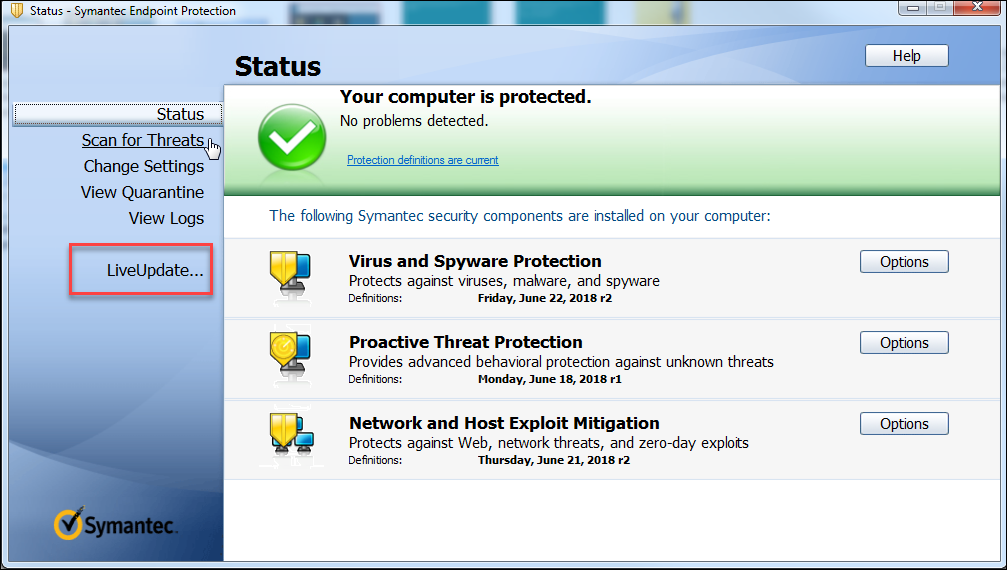

- Symantec endpoint manager change clients gup serial number#
- Symantec endpoint manager change clients gup update#
- Symantec endpoint manager change clients gup full#
- Symantec endpoint manager change clients gup windows 10#
- Symantec endpoint manager change clients gup software#

Symantec endpoint manager change clients gup full#
Symantec endpoint manager change clients gup windows 10#
Some of these capabilities work on Windows 10 Pro, while other capabilities require Windows 10 Enterprise or Education editions. Microsoft Azure Active Directory (Azure AD) and Microsoft Intune bring the power of the intelligent cloud to Windows 10 device management, including management capabilities for BitLocker. In the meantime, we recommend that you start thinking about migrating your devices to Microsoft Endpoint Manager to manage BitLocker. Those of you using MBAM can continue to do so until April 14, 2026. Last year, we also announced extended support for Microsoft BitLocker Administration and Monitoring (MBAM). Today over 200 million devices are managed with Microsoft Endpoint Manager.

Here is a quick summary of those announcements and the current status (although I do recommend you read both posts in detail):

We then announced the marriage of Microsoft Intune and Configuration Manager with Microsoft Endpoint Manager. In May of 2019, we announced that we would be adding capabilities to manage Microsoft BitLocker on enterprise Windows devices to both Microsoft Intune and Configuration Manager. 0 for WIN32BIT” which name can also be found by opening the SAV32.Did you know that you can utilize Microsoft Endpoint Manager to help manage BitLocker on your Windows devices? Since it was also complaing about two old Symantec Installation Packages (hard to find the media for those old versions) I also had to import those two old installation packages and delete them again (import form the SEPM\Packages folder on the installation media and point to the file and name it (in this case) “Symantec Endpoint Protection version. Stopping services (Symantec Endpoint Manager and Symantec Embedded Database) and restoring the “C:\Program Files (x86)\Symantec\Symantec Endpoint Protection Manager\db” folder to a point in time before the last “Policy Date” on the groups in question (although dbvalidator said the old db was ok). I tried everything else and ended up with:
Symantec endpoint manager change clients gup serial number#
If I created new groups they would have no Policy Serial Number and no Policy Date and they also would not show up as hexadecimal folders in “C:\Program Files (x86)\Symantec\Symantec Endpoint Protection Manager\data\outbox\agent” (the groups in question also would not change modified date in this folder).
Symantec endpoint manager change clients gup update#
Most groups would not update virus definitions and the Policy Serial Number + Policy Date remained unchanged despite recent policy changes.
Symantec endpoint manager change clients gup software#
In SEPM Console under Admin -> Servers -> Local Site: Unknown Exception repeated every 16 seconds or soĪlso, though not often: “Failed to create a folder to which to publish the package” and “The binary file referred at the physical file, which is referred at the software package, does not exist” SEVERE: Unknown Exception in: .task.PackageTask


 0 kommentar(er)
0 kommentar(er)
